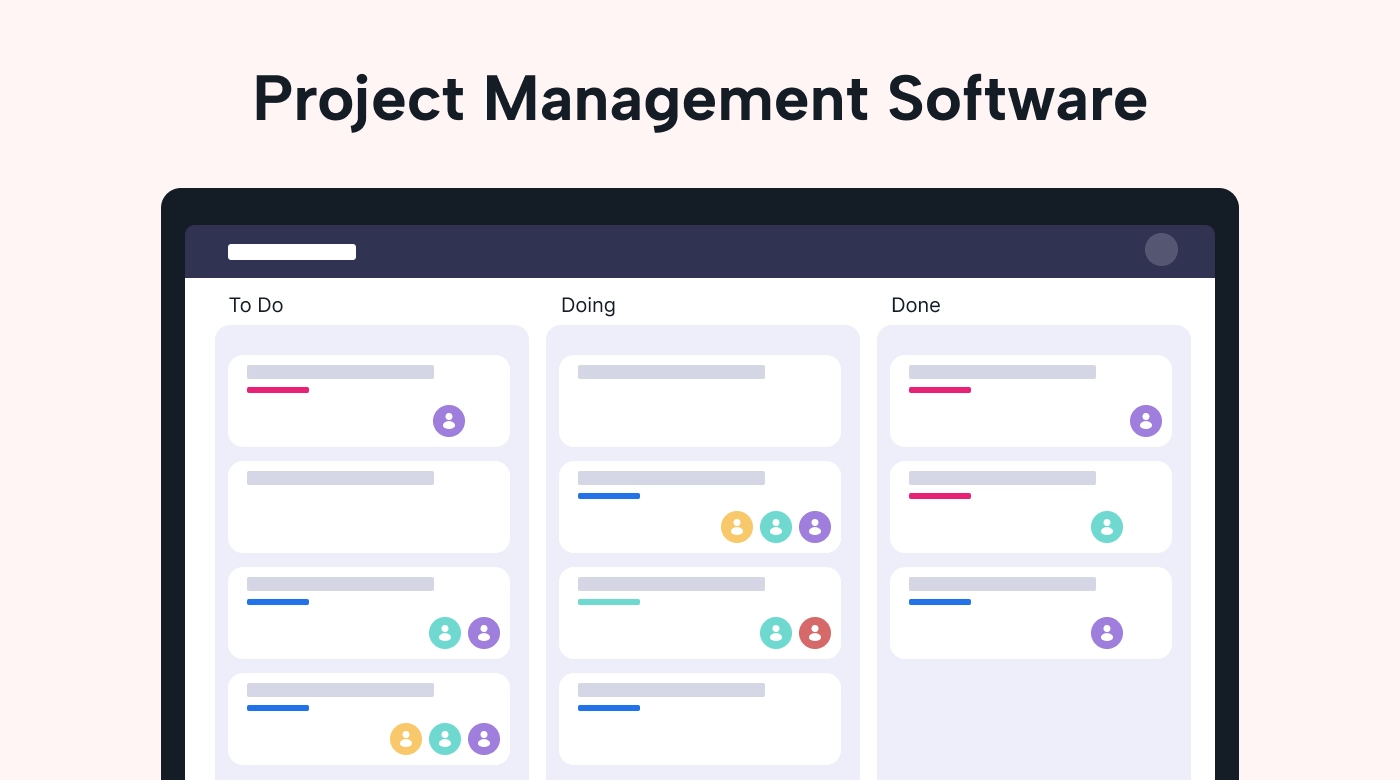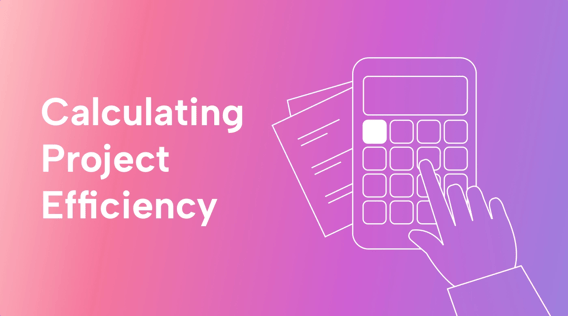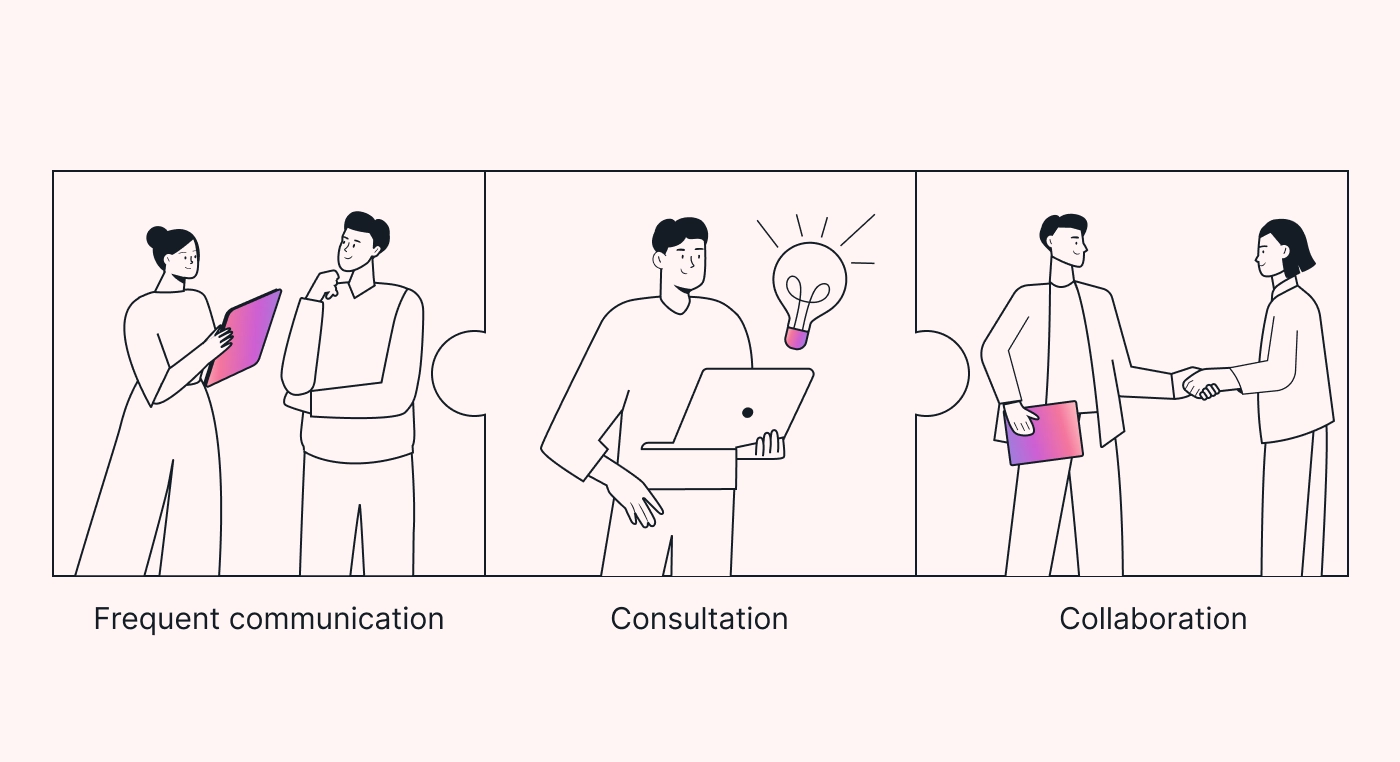Language is fascinating. Especially English, with roughly 1 million words, and where many of the words are often used interchangeably — but not always correctly. We find this phenomenon in project management with the words efficiency and effectiveness, which are often believed to mean the same thing, more or less.
They don’t.
A process can be effective without being efficient, and vice versa. So, what’s the big deal with these semantics? If you manage a project efficiently, your techniques and processes must be effective. Right?
Not quite.
To accomplish something effectively is to do the right job to achieve the desired business outcome. But tackling that same job efficiently means you did it using the resources at your disposal as planned, on time, and without blowing the budget.
In this article, we’ll explain how project managers can focus on efficiency to achieve successful projects. They do that by using their resources efficiently, which means they do so without any waste.
What is project efficiency?
The short version is that an efficient project delivers its expected outcomes exactly as planned, so delivering the project scope on time and within budget. We say within budget because project managers sometimes build a little fat into the budget to allow for contingencies. An efficient project doesn’t need that extra money. The trick is how you accomplish all of that.
And while it’s not terribly complicated, it isn’t particularly simple either. As a project manager and business owner, you need to keep many balls in the air. And then there’s the actual measurement.
How do you measure project efficiency?
Project efficiency is the ratio between the outputs from a project and the resources used to deliver the project. That sounds pretty simple. After all, the inputs are the costs of resources: the time used multiplied by the specific cost of deploying each resource.
You compare the actual figure to what was budgeted at each project stage. That gives you a pretty good assessment of efficiency throughout the project life cycle. For example, if the total outputs at any stage were equal to the planned inputs at that point, your project’s efficiency would be 100%.
And if you’ve used fewer resources than planned at any stage, your efficiency might be 110%, 120%, or even 125%. Similarly, if your project is over budget, its efficiency rate might be 70%, 80%, or 90%. Anything less than 100% means your costs for what you produced were higher than planned. Or for the cost so far, you didn’t complete enough of the scope.
If you’re feeling déjà vu, it’s because this is the principle behind earned value (EV) in projects. Briefly, that’s best described as how much you actually completed divided by what you expected to complete at any given point in time.
Why project efficiency improves project success
The traditional measure of project success is to bring in what’s specified in the project scope on time and without exceeding the budget. So, the first prize is to deliver your project at 100% project efficiency. You might imagine project stakeholders would be pleased with 110%, 120%, or more.
Or so you’d think. But, like most things, it’s not always that simple. Some stakeholders might interpret superior project efficiency to mean your original estimates were inaccurate (overblown).
There’s also the element of time. On a project lasting only a few months, project scope, budget, and schedule are usually the only way to measure success. Project teams diligently use EV to assess progress and track efficiency on longer projects, measured in years rather than months. In Agile projects, they measure efficiency by calculating capacity and velocity.
Factors affecting project efficiency
There are lots of things that can affect efficiency in project management. The obvious ones are project scope, timeline, and budget, and any of those could impact overall project efficiency. However, there are several other related factors, too.
Project planning
An inexperienced project manager might see a project plan as a waste of time, particularly on smaller projects. They may even believe project efficiency is a simple case of completing all the tasks as quickly as possible. But Henry Ford would have disagreed. He often said, “The biggest enemy of quality is the hurry.”
And that’s precisely why project planning is so important. A well-planned project can function like a well-oiled machine. However, a poorly planned one can result in missed deadlines, budget overruns, and an outcome that doesn’t please stakeholders. And that’s why a clear, comprehensive project plan is vital to project success.
Project scope
Every project has an objective. You want to implement a new computer system, develop a new mobile app, construct a new building (or refurbish an old one), or build a bridge, for example. That project objective is the desired result. The project scope is how you set the boundaries for your project: what you will and won't do as part of the project.
It also represents your project requirements, goals, deadlines, size, and the project outcome you plan to deliver. This will obviously affect your project budget, labor needs, and overall efficiency. It’s why scope creep is a swear word in the project management office and why understanding the scope helps you allocate resources to the right places at the right time.
Achievable goals and milestones
Project management is really about overseeing the deployment of resources and managing the expectations of everyone involved in the project — especially your external stakeholders. The key to managing expectations begins with setting clear and achievable project goals and specifying representative milestones.
One way you can do this is with SMART goals, which are Specific, Measurable, Achievable, Relevant, and Time-bound. If you set SMART goals, they’ll be clearly defined, quantifiable, realistic, aligned with your project, and involve deadlines.
Managing those stakeholder expectations just got a lot easier because they know exactly what they can expect and when from the start.
Resource allocation
A key project management skill is managing your resources, and you extract the very best from each of them, be they people, systems, or processes. In some respects, it’s about choosing the right resource for the right job in an environment where you must balance competing priorities and make the most efficient use of your budget.
During the planning phase of your project, you should make sure you clearly communicate what resources you’ll need. If you get them all, hallelujah, but you’ll usually have to be creative about making the best of the resources available to you. If you don’t make clever use of your team’s strengths and talents, you’ll waste time and money and reduce project efficiency.
Team dynamics
Although team dynamics is often thought of as a function of resource allocation, that’s really only because they both involve people. Resource allocation focuses on skills, while team dynamics have more to do with softer stuff, like personality.
Team dynamics is about putting the right people together at the right times for the good of the project. On your team, you’ll likely find introverts, extroverts, optimists, pessimists, and a few people who flip between those states.
Your job as a project manager includes mixing and matching these people when they need to work together. You’ll be a counselor and, at other times, a referee. Finding the right mix of personalities for each stage of your project is part of the job. Not doing that effectively can negatively impact your project efficiency.
Stakeholder management
This is the art of engaging with many people with a vested interest in your project. They could be internal to your own organization or external in the form of funders or customers. Whoever they are, stakeholder management is about understanding their individual needs, managing their expectations, and maintaining positive relationships with them. Not doing so puts the project at risk.
And these are the people who’ll pronounce the success of your project when you present its deliverables. They’ll also weigh in on the efficiency of your project, so it’s also important to know how each of them perceives the measure.
Communication
You probably won’t be surprised that good communication is critical to efficiency in project management. After all, you need to communicate within your team and with stakeholders throughout the project. And yet, according to PMI research, communication breakdowns are the root cause of 30% of project failures.
Something often overlooked in projects is that different people want to receive information on different channels and at different frequencies. They may also prefer to receive it in a different format and to a different level of detail. Getting it wrong with key stakeholders can compromise your project and undo all the good work you may have done elsewhere. A solid communication plan is always a good idea.
Risk management
The longer a project runs, the more risks there are that could rear up and cause problems for you and your team. And even more so with complex projects. The smart way to handle these threats is to adopt a risk management strategy.
This is a factor in project efficiency because potential risks can affect deadlines and your project budget. So, identifying, understanding, and developing mitigation strategies for each risk can help ensure that your project meets its efficiency target.
Balancing efficiency with effectiveness
Any business that regularly undertakes projects as part of its business will want more profitable projects. And that means they need to be both effective and efficient. And to get that right, you need to balance the two ideas rather than focus on them one at a time.
Think about it. If you focus on effective project management first, you can put profitability at risk by spending too much on resources or taking too long to deliver. By balancing the two concepts, you can deliver successful projects while avoiding the usual pitfalls that are known to cause projects to fail.
By doing that, you ensure that your business can keep operating consistently with top-quality deliverables and keep your customers coming back for you to run future projects.
 |
Tips and tricks for success
Project management has been described as a juggling act in a circus. You have a bunch of balls to keep in the air, and somebody keeps adding more. But the good news is that you’re not alone out there. Other project managers and business people have traveled this road before you, and we’ve selected four useful tips and tricks to help you deliver efficient and effective projects.
Set project baselines
One very useful way to improve efficiency in project management is to work out project baselines. These are benchmarks against which you can evaluate your project’s performance. They provide reference points for measuring and managing the entire project’s progress.
There are five project baseline types: scope, budget, schedule, risk, and benefits. However, most project managers only use the first three. Comparing your team’s performance to the baselines throughout your project will keep you in the loop in efficiency ratios.
Monitoring and evaluation
While project baselines are appropriate for large and complex projects with many moving parts, they can be overkill on smaller projects. You can measure your progress using documentation such as your Project Charter or Work Breakdown Structure.
Periodic project reviews will let you track progress, identify areas that need improvement, and make adjustments when required. Tools like project management software or AI-powered task managers can also help your cause.
Understand what is an MVP
Agile project management disciples have introduced the concept of a minimum viable product (MVP). The idea is to produce a product you can offer or demonstrate to customers and use it as a stepping stone in further product development.
The MVP approach lets you clearly understand your product's interest without fully developing it. It serves as a useful test for whether your product will appeal to your target market or specific customer before you commit too many resources to the project. An efficient project should strive to deliver an MVP as quickly as possible.
Use project management software
We’ve touched on this already, but it’s worth repeating. Using project management tools like Motion can keep everyone on track while monitoring your project progress. Tools like this help streamline your planning, scheduling, and task management.
They also let you collaborate within your team, automate processes, monitor progress, and offer you and your stakeholders real-time visibility of your project’s status.
 |
Improve your project efficiency with Motion
Undoubtedly, improving your project efficiency takes a lot of effort, but the payoff makes it all worthwhile. You can often make tiny adjustments to your processes and achieve massive results.
A good example is if you take the necessary time to plan your project, particularly anticipate possible snags, problems, or risks. Even if those challenges don’t rear their ugly heads, because you’ve already done some contingency planning, you’re better equipped to deal with any curve balls that come your way.
Motion helps your project efficiency by allowing you to automate tedious tasks and activities. It will take all your project and non-project work and serve it for you and your team, using AI to optimize your calendars. You and your team won’t waste time figuring out what to do next. This saves time and frees you to focus on more important, strategic issues. Check it out now by signing up for our 7-day free trial.

After 40-odd years of working in technology, project management, media, and marketing, Brian's career and growth journey has exposed him to a wide range of niches. He brings this breadth of knowledge and expertise in his content work through enriched storytelling and original concepts that make SaaS content engaging and accessible for readers of all stripes.







